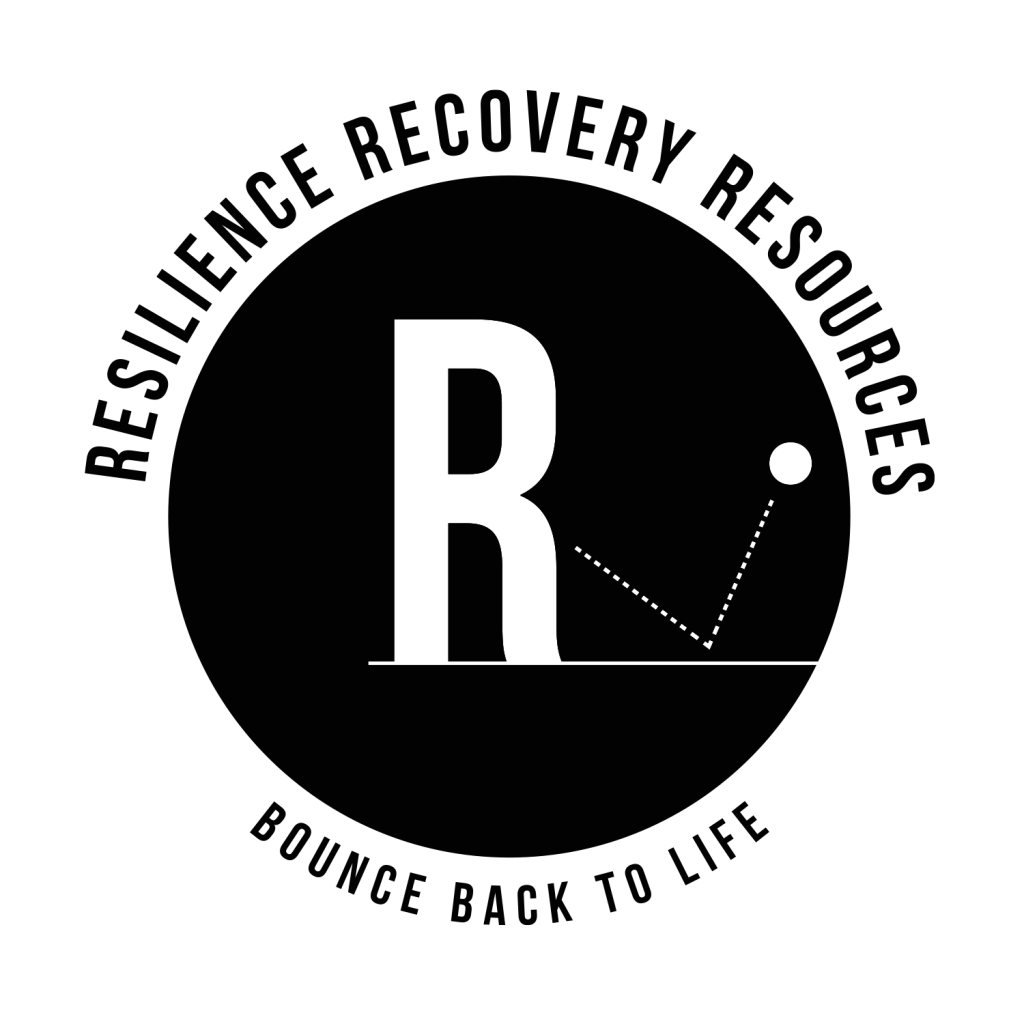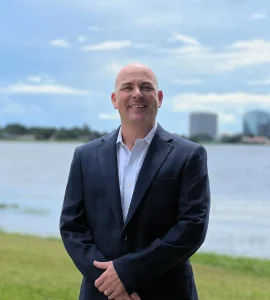Making the decision to send your child or teenager to a rehab center is one of the most difficult choices a parent can face. It requires courage, love, and the recognition that professional help is needed to address substance abuse or addiction issues. According to the CDC, adolescents commonly report using substances to feel good or get high and to relieve pain or aid with sleep problems, with adverse consequences including overdose and the risk for development of substance use disorder. At Resilience Recovery Resources in West Palm Beach, we understand the emotional weight of this decision and the concerns that come with it. This comprehensive guide will help you navigate the process of choosing residential treatment for your adolescent, understand what to expect, and prepare both you and your teen for this crucial step toward recovery.
Understanding When Professional Help Is Needed
Distinguishing Between Experimentation and Addiction
One of the most challenging aspects for parents is determining whether their teen’s behavior indicates normal adolescent experimentation or a developing substance use disorder. It’s crucial to understand that substance misuse and addiction represent different levels of concern. Misuse involves any inappropriate use of substances, while addiction involves compulsive use despite harmful consequences.
Recognizing the Critical Warning Signs
Before considering rehab, it’s important to recognize when your teen’s substance use has moved beyond experimentation into dangerous territory. Recent research from the CDC found that among adolescents being assessed for substance use disorder treatment, nearly 73% reported using substances “to feel mellow, calm or relaxed,” and almost half used drugs to “stop worrying about a problem or forget bad memories.”
Since teen brains continue developing until age 25, substance use during adolescence can cause lasting neurological damage, making early intervention essential. Warning signs that indicate the need for professional intervention include:
Behavioral Changes:
- Dramatic shifts in personality or mood
- Declining academic performance or frequent absences
- Loss of interest in previously enjoyed activities
- Secretive behavior and lying about whereabouts
- New friend groups or reluctance to introduce friends
- Inability to fulfill school or work obligations
- Unexplained possession of drug-related items
Physical Signs:
- Unexplained weight loss or gain
- Changes in sleep patterns or energy levels
- Bloodshot eyes or dilated pupils
- Unusual odors on clothing or breath
- Poor hygiene or grooming habits
- Frequent illness or lethargy
Emotional Indicators:
- Increased aggression or irritability
- Depression or anxiety symptoms
- Emotional volatility or severe mood swings
- Withdrawal from family relationships
- Loss of motivation or focus
- Feelings of paranoia or agitation
It’s important to note that some of these symptoms may also indicate mental health conditions such as depression, anxiety, or bipolar disorder. However, when multiple signs appear together, they often point to substance use concerns that require professional evaluation.
Understanding Addiction vs. Substance Misuse
Parents should understand the distinction between substance misuse and addiction. Misuse includes any inappropriate use of illegal substances, misuse of prescription medications beyond medical recommendations, or excessive consumption of legal substances like alcohol (which is illegal for minors). Addiction, however, involves compulsive substance use that continues despite negative life consequences.
When addiction develops, teens may experience intense cravings and withdrawal symptoms that make stopping feel nearly impossible without professional help. At this stage, willpower alone is rarely sufficient, and comprehensive treatment becomes necessary.
The Legal Aspects of Teen Treatment
Parents should understand their legal authority when it comes to treatment decisions for minors. In the United States, individuals under 18 years of age can be enrolled in residential addiction treatment without their personal consent, as parents or legal guardians maintain decision-making authority for medical care. While this may initially appear to be a harsh approach, there are critical circumstances where parents may find themselves with limited alternatives.
When a teenager’s safety and life are genuinely threatened by substance use, the potential short-term resentment and anger that may result from involuntary treatment admission is typically preferable to the devastating consequences of untreated addiction. This is particularly important given that the brain continues developing and maturing until the mid-to-late twenties, with the prefrontal cortex—responsible for decision-making, planning, and understanding consequences—being one of the last areas to fully mature.
Research from Stanford Medicine shows that the rational part of a teen’s brain isn’t fully developed until age 25 or so, meaning that substance use during these crucial developmental years can cause lasting neurological changes. The National Institute of Mental Health confirms that “the brain finishes developing and maturing in the mid-to-late 20s. The part of the brain behind the forehead, called the prefrontal cortex, is one of the last parts to mature.”
Understanding this developmental reality helps explain why professional intervention may be necessary even when teens cannot yet fully comprehend the long-term consequences of their substance use behaviors. This extended period of brain development makes adolescents particularly vulnerable to the harmful effects of drugs and alcohol, potentially creating permanent alterations in brain structure and function.
Types of Treatment Programs for Teens
Understanding the different levels of care available can help you make an informed decision about what’s best for your teenager.
Residential Treatment
Residential programs provide 24-hour supervision and care in a structured environment. Teens live at the facility for the duration of treatment, which typically ranges from 30 to 90 days or longer, depending on individual needs.
Partial Hospitalization Programs (PHP)
PHP offers intensive treatment during the day while allowing teens to return home in the evenings. This option works well for families who want to maintain some home connection while providing comprehensive care.
Intensive Outpatient Programs (IOP)
IOP provides structured treatment several times per week while allowing teens to continue living at home and potentially attending school. This level of care is often used as a step-down from residential treatment.
Specialized Programs for Adolescents
Look for facilities that specifically cater to teenagers and young adults, as their developmental needs differ significantly from adult clients. Specialized adolescent programs address age-appropriate issues and use treatment modalities designed for younger clients.
What to Look for in a Teen Rehab Center
Accreditation and Licensing
Ensure the facility is properly licensed by state authorities and accredited by organizations such as the Joint Commission or CARF (Commission on Accreditation of Rehabilitation Facilities).
Qualified Staff
Look for programs with:
- Licensed addiction counselors
- Medical professionals experienced in adolescent care
- Mental health professionals
- Educational staff if academic services are provided
Evidence-Based Treatment Approaches
Effective teen rehab programs incorporate proven treatment methods such as:
- Cognitive Behavioral Therapy (CBT)
- Dialectical Behavior Therapy (DBT)
- Family therapy
- Group therapy
- Trauma-informed care
- Motivational interviewing
According to recent clinical research published in PMC, psychosocial treatments such as family-based therapy, cognitive behavioral therapy, and multicomponent approaches remain the most effective methods of adolescent substance use disorder treatment.
Addressing Co-Occurring Conditions
Research indicates that over 60% of adolescents in community-based substance use disorder treatment programs also meet diagnostic criteria for another mental health condition. Many teens struggling with substance abuse also have co-occurring mental health disorders such as depression, anxiety, or ADHD. A 2024 study found that adolescents experiencing a past year major depressive episode were more likely than peers to have used illicit drugs (26% vs 12%) and engaged in binge drinking.
Effective treatment programs address both the substance use disorder and mental health conditions simultaneously, as this integrated approach leads to significantly better outcomes than treating these conditions separately. Choose a facility equipped to provide comprehensive dual diagnosis treatment.
Family Involvement
Recovery is most successful when families are actively involved in the treatment process. Look for programs that offer family therapy, education sessions, and ongoing support for parents and siblings.
Considering Interventions Before Forced Treatment
While parents have the legal right to place minors in treatment without consent, it’s generally preferable for both treatment outcomes and family relationships when teens voluntarily agree to seek help. Sometimes, a carefully planned intervention involving close family members and friends can help a teenager understand that their loved ones are concerned and want to support their recovery.
Key Principles for Effective Interventions:
- Focus on love and concern rather than blame or judgment
- Prepare specific examples of concerning behaviors
- Research treatment options beforehand
- Be ready to act immediately if the teen agrees to treatment
- Consider professional intervention assistance if needed
Research indicates that getting individuals into treatment as soon as they express willingness can be crucial for encouraging a positive start and successful outcome in the recovery process. Having treatment options already researched and available can make the transition smoother and more immediate.
Preparing Your Teen and Family for Treatment
Having the Crucial Conversation
Discussing rehab with your teenager requires careful planning and sensitivity. Consider these approaches:
Choose the Right Time and Place:
- Have the conversation when your teen is sober
- Select a private, comfortable setting
- Ensure adequate time for discussion without interruptions
Approach with Love and Concern:
- Express your love and concern for their wellbeing
- Avoid blame, shame, or anger
- Focus on specific behaviors and their consequences
- Emphasize that seeking help shows strength, not weakness
Be Prepared for Resistance:
- Expect denial, anger, or attempts to bargain
- Stay calm and consistent in your message
- Have specific examples of concerning behaviors ready
- Consider involving a professional interventionist if needed
According to NIDA research, early prevention interventions are crucial to support teens who may turn to drug use to cope with stress, anxiety, or depression. Remember that half of surveyed teens reported using drugs alone, which greatly increases their risk for deadly overdoses.
Involving Your Teen in Treatment Decisions
When possible, involve your teenager in choosing the treatment facility. This participation can increase their investment in the recovery process and reduce resistance to treatment. Even when legal authority allows parents to make treatment decisions unilaterally, collaborative decision-making often leads to better outcomes.
Preparing the Entire Family System
Recovery affects the entire family, not just the individual struggling with addiction. Family members should prepare for:
- Learning about addiction as a medical condition
- Participating in family therapy sessions
- Adjusting communication patterns and expectations
- Developing healthy boundaries and support strategies
- Understanding their own role in the recovery process
The Treatment Process: What to Expect
Pre-Treatment: Medical Detoxification
Some teenagers may require medically supervised detoxification before beginning comprehensive treatment. This process allows the body to safely eliminate substances while managing withdrawal symptoms as comfortably as possible. Medical professionals may prescribe medications to address symptoms such as anxiety, depression, insomnia, nausea, or tremors during this phase.
Comprehensive Treatment Components
Teen rehabilitation programs typically combine multiple evidence-based approaches:
Psychoeducational Components:
- Understanding addiction as a medical condition
- Learning about the effects of substances on the developing brain
- Identifying personal triggers and risk factors
Therapeutic Interventions:
- Individual counseling sessions
- Group therapy with peers facing similar challenges
- Specialized therapies targeting underlying issues
Family Integration:
- Family therapy sessions to improve communication
- Educational programs for parents and siblings
- Training in supportive (non-enabling) behaviors
Life Skills Development:
- Stress management techniques
- Healthy coping mechanisms
- Relapse prevention strategies
Communication with Home
Understanding the facility’s communication policies is important. Most programs allow:
- Scheduled phone calls with family
- Visiting days or family therapy sessions
- Progress updates from treatment staff
- Emergency contact procedures
Supporting Your Teen’s Recovery
Family Therapy Participation
Active participation in family therapy is crucial for successful outcomes. Family sessions help:
- Improve communication patterns
- Address family dynamics that may contribute to substance use
- Develop healthy boundaries
- Prepare for your teen’s return home
Education and Support for Parents
Many facilities offer educational programs for parents that cover:
- Understanding addiction as a disease
- Recognizing triggers and warning signs
- Developing effective communication strategies
- Creating a supportive home environment
- Self-care for family members
Preparing for Your Teen’s Return
Before your teenager completes residential treatment, work with the treatment team to:
- Develop a comprehensive aftercare plan
- Identify local support resources
- Establish clear expectations and boundaries
- Plan for ongoing therapy or support groups
- Discuss potential challenges and coping strategies
Financial Considerations
Insurance Coverage
Most insurance plans provide some coverage for addiction treatment, but coverage levels vary. Important steps include:
- Contacting your insurance provider to understand benefits
- Verifying coverage for the specific facility you’re considering
- Understanding co-pays, deductibles, and out-of-pocket maximums
- Asking about pre-authorization requirements
Payment Options
Many facilities offer various payment options including:
- Insurance billing assistance
- Payment plans
- Financial assistance programs
- Sliding scale fees based on income
Long-term Investment
While treatment can be expensive, consider it an investment in your child’s future. The cost of treatment is often less than the long-term consequences of untreated addiction.
Addressing Common Concerns
Will My Teen Resent Me?
It’s natural to worry about your relationship with your teen after making the decision to send them to rehab. While they may initially be angry or resistant, most teens eventually recognize that their parents’ decision came from love and concern for their wellbeing.
What About School?
Many residential programs provide educational services or work with your teen’s school to ensure they don’t fall behind academically. Discuss educational planning during the intake process.
Confidentiality Concerns
Treatment facilities must follow strict confidentiality guidelines. Understand what information can be shared with you and what requires your teen’s consent.
What If Treatment Doesn’t Work?
Recovery is often a process that may require multiple attempts. If your teen relapses after treatment, it doesn’t mean the program failed. Many people require several treatment episodes before achieving lasting recovery.
Understanding That Recovery Is an Ongoing Journey
The Reality of Long-Term Recovery
Parents must understand that completing a treatment program doesn’t mark the end of the recovery journey. Addiction is a chronic condition that requires ongoing management, similar to other medical conditions like diabetes or hypertension. Cravings may persist for years, and various life stressors, peer pressure, and environmental triggers can challenge your teen’s sobriety.
Reframing Relapse as Part of Recovery
It’s crucial for families to understand that addiction is a medical condition, not a personal failing or character weakness. If relapse occurs, it doesn’t mean that treatment has failed or that your teen lacks willpower. Instead, relapse may indicate that additional or different treatment approaches are needed. Many individuals require multiple treatment episodes before achieving sustained recovery.
Building Long-Term Support Systems
Successful long-term recovery typically involves:
- Ongoing individual counseling or therapy
- Regular participation in peer support groups
- Family therapy to maintain healthy communication
- Continued medical monitoring when appropriate
- Strong support networks of friends and mentors in recovery
- Engagement in meaningful activities and goals
The Role of Aftercare in Long-term Success
Continuing Care Plans
A comprehensive aftercare plan is essential for maintaining recovery after residential treatment. Components may include:
- Outpatient therapy or counseling
- Support group participation
- Medical monitoring
- Educational or vocational planning
- Family therapy continuation
Recognizing Progress and Celebrating Milestones
Recovery is a journey with many small victories along the way. Celebrate milestones such as:
- Completion of treatment programs
- Return to school or work
- Improved family relationships
- Periods of sustained sobriety
- Personal growth and maturity
When to Seek Help Immediately
Some situations require immediate professional intervention. If you’re experiencing a crisis, contact:
- SAMHSA’s National Helpline: 1-800-662-HELP (4357) – free, confidential, 24/7 treatment referral service
- Crisis situations requiring immediate action:
- Threats of self-harm or suicide
- Overdose or medical emergency
- Violent or dangerous behavior
- Complete loss of contact with your teen
- Evidence of dealing drugs
SAMHSA’s National Helpline provides referrals to local treatment facilities, support groups, and community-based organizations for individuals and families facing mental and substance use disorders.
Finding Hope in the Journey
While sending your child to rehab is undoubtedly one of the most challenging experiences a parent can face, it’s important to remember that you’re taking a crucial step toward giving them the tools they need for a healthy, successful future. Recovery is possible, and many teenagers go on to live fulfilling lives after overcoming addiction.
How Resilience Recovery Resources Can Help
At Resilience Recovery Resources in West Palm Beach, we specialize in providing comprehensive addiction treatment for adolescents and young adult males. Our programs include Partial Hospitalization (PHP), Intensive Outpatient (IOP), and standard outpatient treatment, along with sober living support. We understand the unique challenges facing teenagers struggling with substance abuse and provide evidence-based treatment in a compassionate, structured environment.
Our experienced team works closely with families throughout the treatment process, providing education, support, and guidance every step of the way. We believe that recovery is not just about stopping substance use—it’s about helping young people develop the skills, confidence, and support systems they need to thrive.
If you’re considering treatment options for your teenager, we encourage you to reach out to learn more about our programs and how we can support your family during this challenging time. Taking this step shows tremendous courage and love for your child, and we’re here to help guide you through the process.
If you’re ready to take the next step, or if you have questions about treatment options for your teenager, don’t hesitate to reach out for help. The professionals at Resilience Recovery Resources are here to support you and your family on this journey toward recovery and healing.
For more information about our adolescent and young adult treatment programs, contact Resilience Recovery Resources at 561-566-5480. We’re here to help you navigate this difficult time and provide the support your family needs.
Additional Resources
For immediate help and information:
- SAMHSA’s National Helpline: 1-800-662-HELP (4357)
- SAMHSA’s Treatment Locator: FindTreatment.gov
- National Institute on Drug Abuse (NIDA): nida.nih.gov
- CDC Substance Use Resources: cdc.gov/substance-use
References
- Centers for Disease Control and Prevention. (2024). Characteristics of Alcohol, Marijuana, and Other Drug Use Among Persons Aged 13–18 Years Being Assessed for Substance Use Disorder Treatment. MMWR. https://www.cdc.gov/mmwr/volumes/73/wr/mm7305a1.htm
- Substance Abuse and Mental Health Services Administration. (2024). Substance Use Disorder Treatment Resources for Youth, Young Adults, and Families. https://www.samhsa.gov/substance-use/treatment/youth-and-families
- National Institute on Drug Abuse. (2023). Reported drug use among adolescents continued to hold below pre-pandemic levels in 2023. https://nida.nih.gov/news-events/news-releases/2023/12/reported-drug-use-among-adolescents-continued-to-hold-below-pre-pandemic-levels-in-2023
- PMC. (2020). Adolescent Substance Use Disorder Treatment: An Update on Evidence-Based Strategies. https://pmc.ncbi.nlm.nih.gov/articles/PMC7241222/
- KFF. (2024). Recent Trends in Mental Health and Substance Use Concerns Among Adolescents. https://www.kff.org/mental-health/issue-brief/recent-trends-in-mental-health-and-substance-use-concerns-among-adolescents/
- National Institute of Mental Health. The Teen Brain: 7 Things to Know. https://www.nimh.nih.gov/health/publications/the-teen-brain-7-things-to-know
- Stanford Medicine Children’s Health. Understanding the Teen Brain. https://www.stanfordchildrens.org/en/topic/default?id=understanding-the-teen-brain-1-3051
- PMC. (2015). What Can Parents Do? A Review of State Laws Regarding Decision Making for Adolescent Drug Abuse and Mental Health Treatment. https://pmc.ncbi.nlm.nih.gov/articles/PMC4393016/



